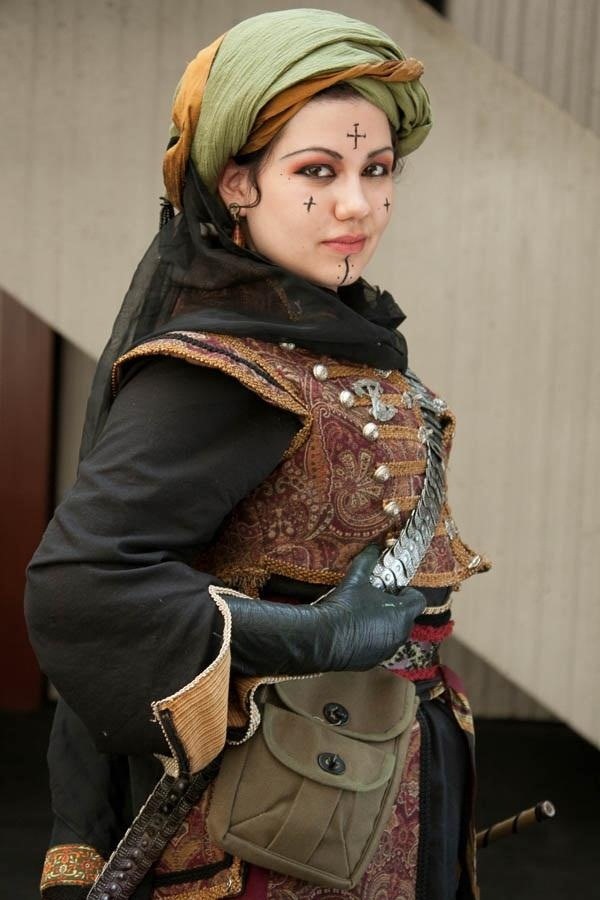This weekend, I had the pleasure of being part of several panels for WhimsyCon 2021, the local Denver Steampunk convention. The topics I got to contribute to were both writing and steampunk related and most of these brought on great discussions from both panelists and audience members.
However, one panel was not very satisfying:
Steampunk Outside of Colonialism.
This panel was supposed to address what steampunk would look like in non-white cultures if they had not been affected by Victorian Imperialism or “the invasion of the white man”. Unfortunately, the discussion doesn’t work very well when you have a moderator who is obsessed with Victoriana.
Just let that sink in just for a moment….
When your moderator is talking about how the Victorian era was more like a utopia (really only viewed like that by the upper class) and food was becoming more prevalent (uh…anyone remember the Irish potato famine?) and disease was being controlled (cholera outbreak, anyone? How about treating syphilis with mercury?), and that the Victorians borrowed things from other cultures and made this better (Isn’t that why we are in this predicament in the first place??), this kind of put a damper on my desire to argue with someone who is probably a racist.
Thus, I didn’t feel like I gave this panel my best shot. Therefore, I apologize to all the attendees if it wasn’t the panel you were expecting. Now, I would like to give my full answer here.
To answer this question fully, I think we first need to understand what Steampunk actually means. And when we think of this definition, it’s important to look at the multiple iterations of it, since steampunk originated in the ’80s, but went through a resurgence in the 2000s. Initially, steampunk came out through the books of:
Anubis Gates but Tim Powers, Morlock Night by K.W. Jeter, and Homunculus by James Blaylock.
These three stories dealt with anti-establishment themes where they were exposing the flaws in the powers that be–essentially “cyberpunk but in the era of the Victorians and steam-power”.
However, when steampunk saw its resurgence in the 2000s, it grew to be more focused on the Victorian aesthetic of clothing and their futuristic gadgets using the technology of the time (steam power, gears, pipes, leather etc.). The subculture then grew into a large and inclusive group where you would find players of all colors, creeds and etc..
This led to the thinking of “so, if we have inclusivity in our modern iteration of steampunk, could we have inclusivity in the cultures that we portray?” That’s how people started thinking outside of the Victoriana box and realizing how nasty British imperialism really was. (And that we are still feeling the effects today. A cool author this weekend, Vannessa Robertson told me she believes there are no 3rd world countries, just countries recovering from Imperialism and I think that hits home so well).
OK, now the next question people started asking is, if we take out the “white man’s influence” to these cultures, what would steampunk look like?”

What we need to do is take those non-white cultures and look at the resources they had on-hand–food, natural resources, power sources [real or theoretical], cultural beliefs, and structure of their “high” society. What we’re looking for here is:
How could technology make the common folk’s life better without them being so beholden to the upper class? This is kind of where steampunk went initially, with the idea that steam technology became more cost-effective and easier to access and thus spread widely to the lower classes. In addition, we could take unique (not borrowed) fashion from the era of those other cultures (Indian, Pilipino, Egyptian, Chinese etc.) and expand upon it creatively in the aesthetic of steampunk.
Now, you may be thinking, “Wait…isn’t this cultural appropriation?” Well, let’s look at the definition of the term:
Cultural Appropriation is: the unacknowledged or inappropriate adoption of the customs, practices, ideas, etc. of one people or society by members of another and typically more dominant people or society.
The key words here are “unacknowledged” and “inappropriate”. This is different than reenacting where you are recreating cultural elements with the intent to experience and educate rather than to claim. Because as damaging as cultural appropriation is the dominant culture, it’s as bad to deny the existence of or refuse to acknowledge other cultures. Talk about isolationism and xenophobia right there…
So, now that we’ve established that this isn’t cultural appropriation, the next question you probably have is, “Well how could they be steampunk if they don’t use steam?” And my answer to that is, “Don’t be so literal, Joe.”
But seriously, first of all, it’s not beyond the realm of possibility that other cultures WOULDN’T have invented steam power on their own, had they been given the chance. Secondly, if we start looking at steampunk as an “alternate technological future”, that opens up a world of possibilities. Maybe an island culture like the Philippines would have gone crazypants with water power and water transportation? Maybe a high-mountain culture would have discovered a mineral that powers better than coal or petrol? Maybe a desert region would have discovered solar power…? And on and on…the possibilities are endless.
Ultimately, steampunk is science FICTION (aka fantasy) so we can theorize whichever way we want. For instance, we could speculate that Wakanda could be considered “steampunk”. They developed technology and an advanced society on an alternate power source without the influence or takeover of the Imperialists.
Though there are a few things about Wakanda that may still be considered problematic–i.e. the idea of the “noble savage” where they have a utopian “exotic” society that works perfectly and is mostly peaceful etc. But we could probably combat that stuff with just adding in more realism, difference within, and conflict to their culture.

Anyway, without doing more investigation and going into a multi-cultural steampunk rabbit hole (which I still probably will do), that would have been my answer for the panel. Please tell me in the comments if you have any other suggestions or thoughts on non-Victorian steampunk!
I will leave you with this book, Steampunk Down Under, a collection of steampunk stories by Australian and New Zealand authors, recommended by fellow panelist, Richard Blank (from STEMpunk Ed, https://www.stempunked.com/ ). I haven’t read it yet, but I will say I’m picking it up soon, though I need to ask him for the link b/c a 2-second Google search didn’t find it.
And this other book I found while looking for the one above which I also intend to pick up!
Happy Creating!




